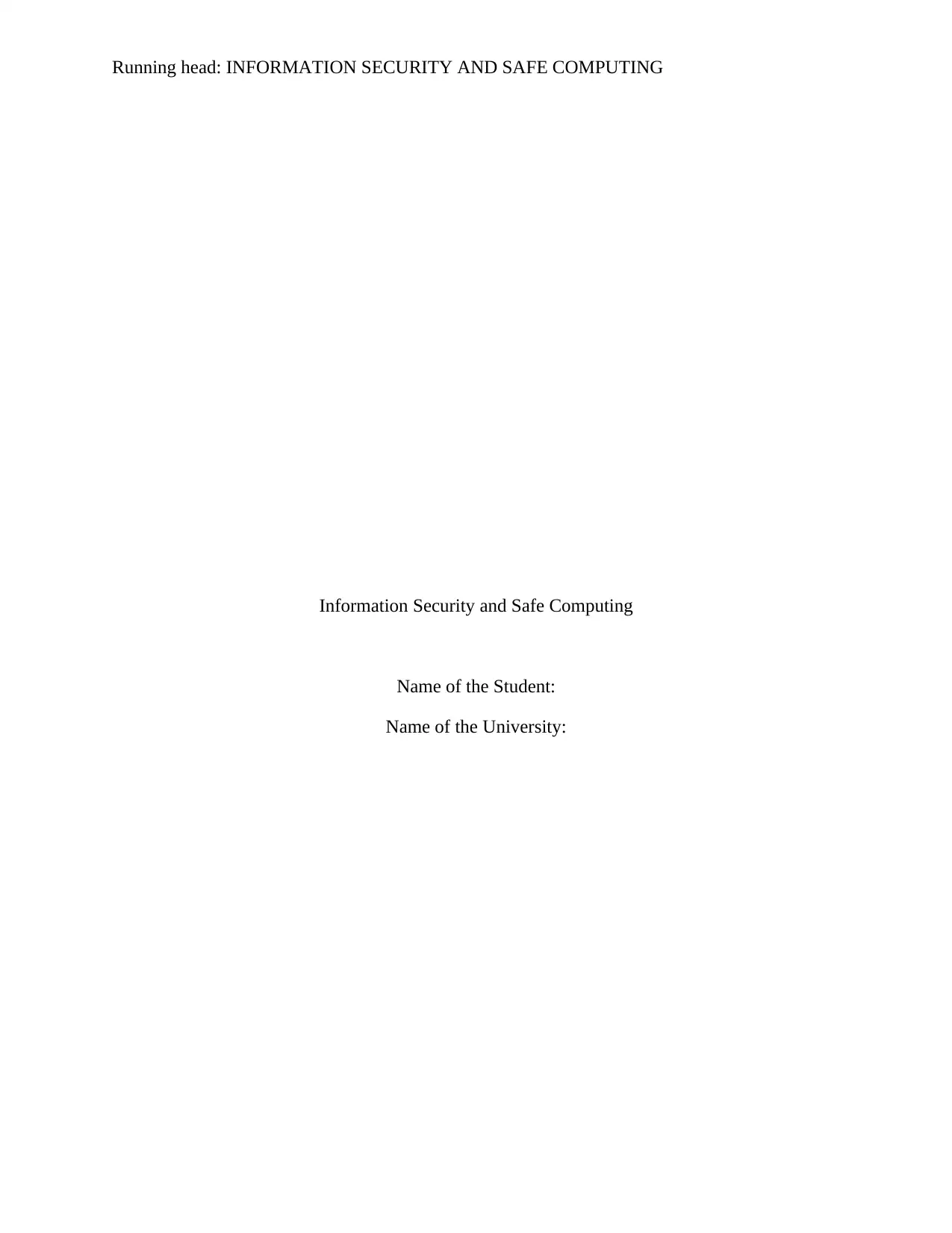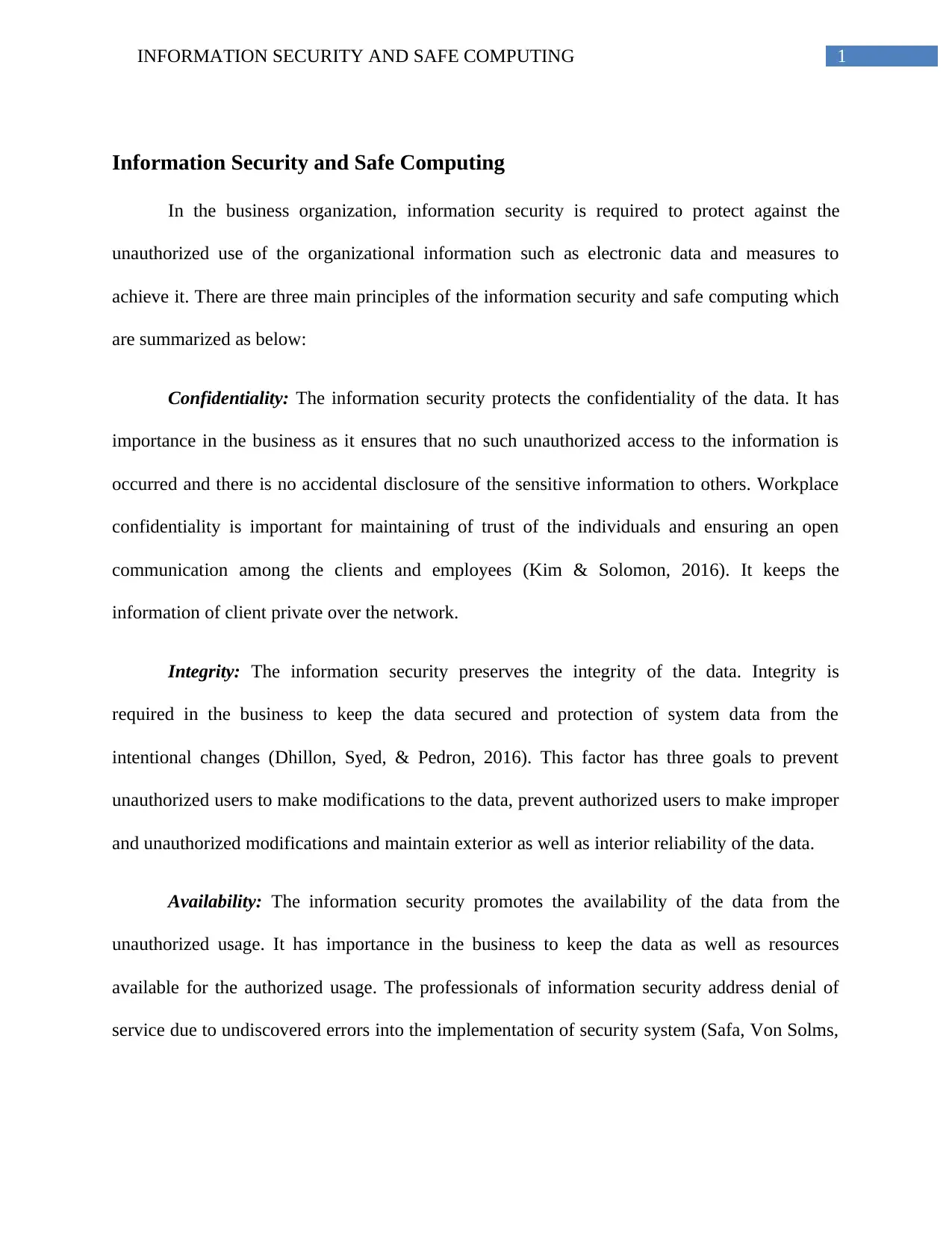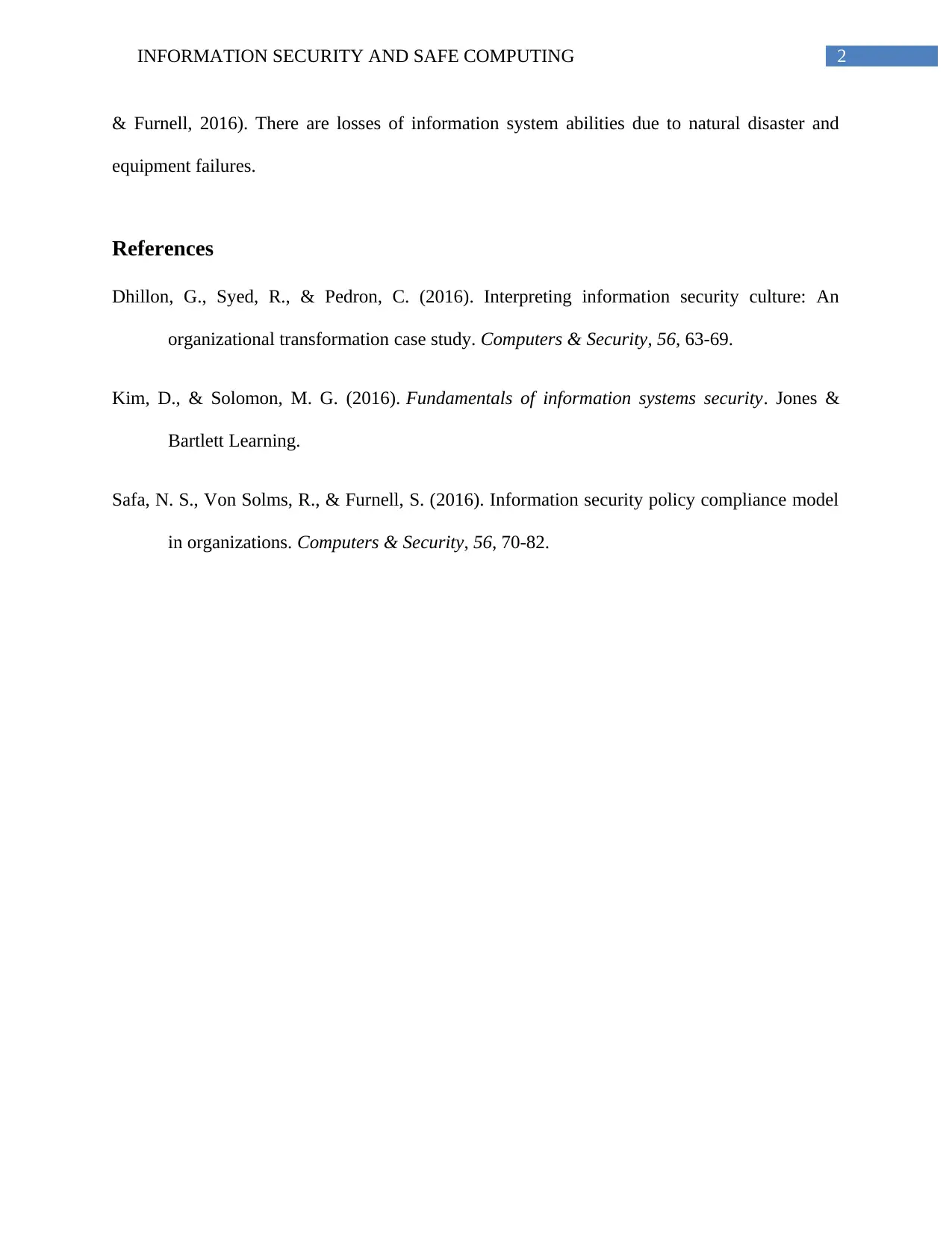Information Security and Safe Computing: Report on Security Concepts
VerifiedAdded on 2023/01/16
|3
|427
|83
Report
AI Summary
This report provides an overview of information security and safe computing, focusing on three key principles: confidentiality, integrity, and availability. Confidentiality ensures that sensitive information is protected from unauthorized access, maintaining the privacy of client data and fostering open communication. Integrity focuses on securing data and preventing unauthorized modifications, both internally and externally, to ensure data reliability. Availability emphasizes the importance of accessible data and resources for authorized users, addressing potential disruptions from various sources such as system errors, natural disasters, and equipment failures. The report cites relevant sources to support the understanding of these principles and their practical applications within a business context.
1 out of 3









![[object Object]](/_next/static/media/star-bottom.7253800d.svg)